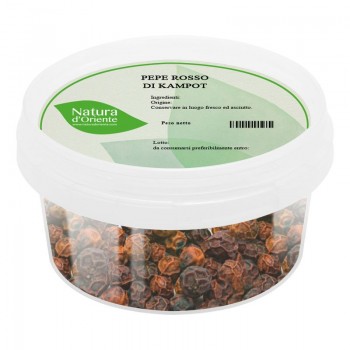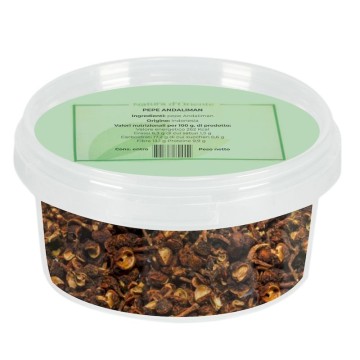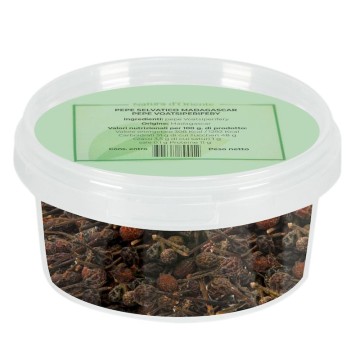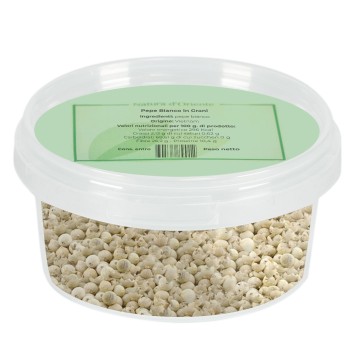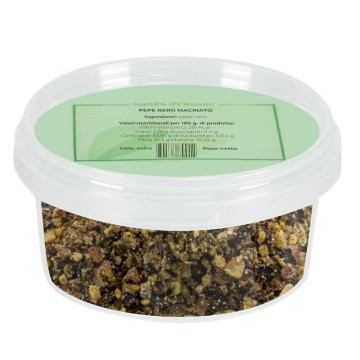Sichuan pepper is a berry native to Asia where it is used both in cooking as a spice and in pharmacology. The appearance of the berry is similar to that of pepper but the use made of it is different, the seeds inside are discarded (because they are bitter) and the peel is used.
The plant and the fruit
The scientific name of the genus of the different species of plants from which the Sichuan pepper is obtained is Zanthoxylum and is part of the Rutaceae family. The genus Citrus that is citrus fruits belongs to the same family. It will therefore come as no surprise that a hint of lemon can be perceived in the taste, so much so that one of the common names by which the spice is known is Indonesian pepper-lemon.
To be more precise: you will often find the species Zanthoxylum piperitum as the scientific name for Sichuan pepper, but that's not the case, Zanthoxylum piperitum is grown mostly in Japan and Korea, in China the spice is mainly obtained from Zanthoxylum bungeanum (red pepper from Sichuan) and Zanthoxylum armatum (green pepper from Sichuan). In reality, however, it is always the same spice. The plant can look like a small tree or a shrub, it blooms between April and May, it is a deciduous plant. There are male flowers and female flowers, the latter produce the berries which turn red when ripe and open spreading the black seeds. Most of the species and varieties have thorns, except the Japanese variety Asakura sansho of Zanthoxylum piperitum which is intensively cultivated precisely for this characteristic that makes harvesting easier. The plant is very resistant to both heat and extreme cold, instead it fears both drought and stagnation of water.
Place of origin and cultivation
We have already answered in part in the previous paragraph, the Sichuan pepper obviously comes from the province in the south-western part of China from which it takes its name and is a very used ingredient in regional cuisine of Sichuan. The spice, however, under other names is widely cultivated and used in Japan, Korea, Indonesia, Butan, India.
Properties and benefits of Sichuan pepper
As usual talking about spices: obviously it has nutritional properties, for example 100 grams bring 270 calories, but it makes sense to talk about the nutritional values of a spice considering the quantities consume? In traditional Chinese medicine it is used above all for its pain relieving (especially against toothache) and antipruritic properties. It goes without saying that it is not a good idea to try to suffocate a discomfort in the teeth without investigating the cause at the dentist, but perhaps while waiting for the appointment you can try to soothe the discomfort in a natural way.
Furthermore, always in traditional Chinese medicine, Sichuan pepper is used in the treatment of gastric or digestive disorders such as dyspepsia. As far as modern studies are concerned, the most studied component is Hydroxy-alpha-sanshool which is contained at 3% in the spice and which is thought to be responsible for the feeling of numbness it leaves in the mouth, since it does so by acting on the receptors of the pain is probably also responsible for the pain-relieving action recognized by traditional medicine.
Curiosities about Sichuan pepper
It is one of the oldest Chinese spices , so much so that Confucius mentions it in his Poem of Odes.
The soldiers carried it with them during the marches because according to a superstition it kept accidents away, they also chewed it to stay awake during the longer marches.
It was brought to Europe by Marco Polo, it became very popular among the Italian nobility, but then fell into oblivion for a long time before being rediscovered in 1800.
The plant is also available in a bonsai version and is highly appreciated for its resistance to extreme temperatures which allows it to be kept both outdoors and indoors.
Use of Sichuan pepper in the kitchen
Sichuan pepper is used in a similar way to real pepper, the taste is partly similar, at first glance it too is spicy and pungent but much less than both pepper and chilli, but it is more aromatic and immediately leaves a hint of lemon in the mouth and a particular feeling of numbness. Depending on the various species of thegenus Zanthoxylum these characteristics can vary in intensity, for example, remaining the two most cultivated species in China, the red Sichuan pepper (obtained from Z. bungeanum) has a more persistent taste, the green variety has a less intense taste but a more strong numbing effect.
Sichuan pepper is a key ingredient in the preparation of various spice blends , including: Ma-la a mixture of chilli and Sichuan pepper (the term in Chinese means spicy and numb); Shicimi togarasi a traditional Japanese blend composed of seven spices (the main one is a type of red pepper called togarashi, some of the other six can change from region to region but traditionally are: dried mandarin peel, sesame seeds, poppy seeds, hemp seeds, chopped nori seaweed, Sichuan pepper); the five Chinese spices (star anise, fennel seeds, cinnamon, cloves, Sichuan pepper).
Rye focaccia with kale, hemp and Sichuan pepper
Ingredients for 2 people
- Soft wheat flour 150 gr
- Rye flour 100 gr
- 5 tablespoons of oil
- Kale 1 bunch
- Garlic 3 cloves
- Hemp seeds 100 gr
- Sichuan pepper 6 berries
- Salt
- Water
Preparation
1) Mix the two flours with the oil, about half a glass of warm water and a pinch of salt.
2) Work until the dough is elastic and oily.
3) Let it rest
4) While the dough rests, blanch the cabbage in water after washing it.
5) Crush the hemp seeds with the pepper berries and a pinch of salt in a mortar.
6) Sauté the finely chopped garlic in a pan with a drizzle of oil, add the hemp seeds and pepper and then add the cabbage, allowing it to flavor for a few minutes.
7) Roll out the dough with a rolling pin and line a 20 cm diameter pan.
8) Stuff with vegetables and fold the dough towards the center, like a bag.
9) Bake at 200 degrees for 30 minutes






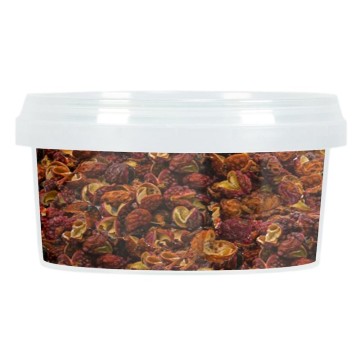


 No reward points for this product.
No reward points for this product.


